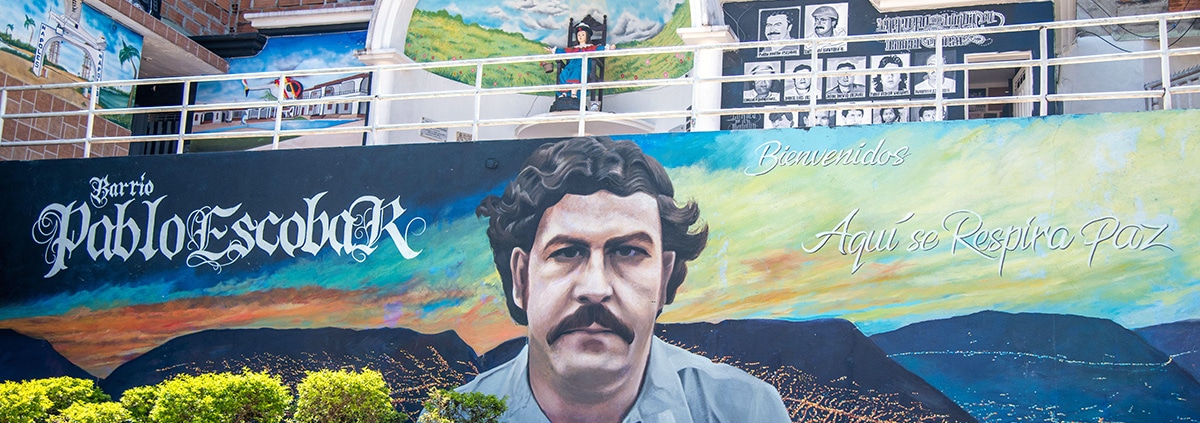When Criminals Rule the Land
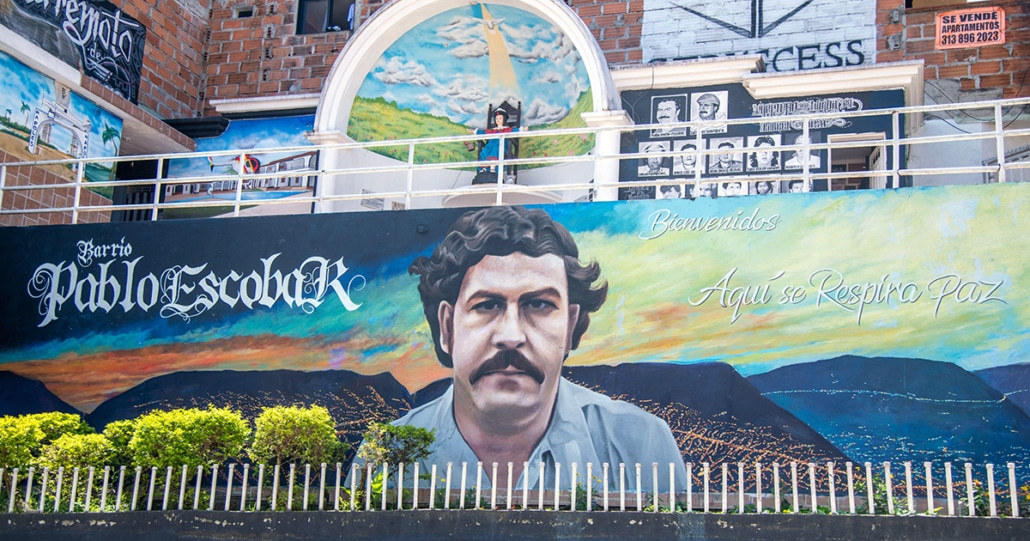
At the beginning of 2023, the state of Sinaloa endured hours of violence as Mexican authorities hunted down and captured Ovidio Guzmán, the son of the famous drug trafficker Joaquín “El Chapo” Guzmán. Blockades, shootings and citizens locked in their homes: It was a stark demonstration that in Latin America, there are places where the state does not govern but, instead, the criminals—in this case the Sinaloa Cartel—are in charge. Wresting back control, even momentarily, comes at a high cost (29 people died in this operation, including military personnel and alleged criminals).
Mexico is an iconic case, but not the only one. In Ecuador, for example, the state has lost control in its overcrowded prisons, where criminal organizations extort money from detainees and their families, and also carry out massacres inside prison walls. Seven such massacres in 2021 and 2022 claimed the lives of more than 350 people, according to Human Rights Watch.
Criminal groups have been shown to settle property rights issues between neighbors and provide public services, recreation, and sports.
Latin American magical realism seems to have leapt from the pages of literature and landed into real-life politics and law enforcement. This has helped to transform Latin America into a place that, in the absence of armed conflict, has the highest rates of violence in the world. According to 2018 data from the Economic Commission for Latin America, the region has 10 times more homicides (23 per 100,000 inhabitants) than Europe (2.1 per 100,000) and about eight times more than Asia (2.7 per 100,000). Of these homicides, 93 percent are concentrated in Brazil, Colombia, Mexico, Venezuela, El Salvador, Guatemala and Honduras, countries that are home to only 68 percent of Latin America’s population.
Part of this violence is the product of criminal governance, the process by which criminals—paramilitary groups, vigilantes, death squads, guerillas, drug cartels, organized crime groups and gangs—take over the traditional role of the state and govern or co-govern a territory and a population. There are areas in Latin America where criminals have taken charge of maintaining public services, building infrastructure and even dispensing justice.
“Most societies in this region are grappling with patterns of criminal governance through which state officials, political authorities and organized crime actors co-govern. While the phenomenon is certainly not new, it has attained greater prominence as ever more influential and powerful criminal syndicates have entered into the bloodstream of many societies, transforming traditional forms of governance,” write political scientists Andreas Feldmann of the University of Illinois Chicago and Juan Pablo Luna of the Pontificia Universidad Católica de Chile, in a 2022 article in the Annual Review of Sociology on the state of criminal governance in Latin America.
Feldmann discussed this parallel order in which rules are imposed on citizens by criminal organizations, often with the collaboration of state agents. This interview has been edited for length and clarity.
What is criminal governance and how does it differ from the organized crime we can find in any country?
The difference has to do with the notion of governance. Organized crime is motivated by profit; its objective is not to govern. Criminal governance is a context in which criminal groups govern spaces, population and territory. The Sinaloa Cartel in Mexico governs several communities where the population knows that the state does not have the capacity to intervene. In Rio de Janeiro, the Amigos dos Amigos gang rules Rocinha, one of the main favelas of this Brazilian city.
Why would criminal groups want to embark on such an arrangement? Because it’s good for business. To the extent that you control a territory and a population, it facilitates the organization and productivity of your business.
What do the formal authorities get out of such an arrangement?
People tend to think that states are inevitably corrupt. There is something of that in many officials, but often what happens is that they are also threatened, and they have no alternative but to bow to this order: To the extent that the state loses its monopoly on the use of coercion, it has difficulties in confronting groups that are powerful and that threaten officials or extort money from them.
It is the old dictum of Pablo Escobar, the notion of money or lead (plata o plomo): “I buy you or I kill you.”
The Colombian drug trafficker Pablo Escobar, leader of the Medellin Cartel until he was killed in 1993, gave many citizens what the state did not give them, such as houses for the poor and soccer fields for the neighborhoods. Are these types of actions also a form of criminal governance?
Absolutely. Many times, you talk to people in the communities, and they prefer the criminals to the state because the rules are clearer, and because they are bothered by the double discourse of the state agents—who on the one hand say they operate according to the law, but on the other hand commit the same abuses, or sometimes even worse abuses than the criminals.
There are studies in Brazil on how these criminal groups administer justice in sectors where there is no justice, where there is total impunity with respect to robberies, sexual assaults and other incidents in the communities. These organized crime groups have a parallel justice system where they manage these types of problems, and the communities value this very much, as in the case of Rocinha, in Rio. Inhabitants of this favela say they feel safe, and criminal groups have been shown to settle property rights issues between neighbors and provide public services, recreation, and sports.
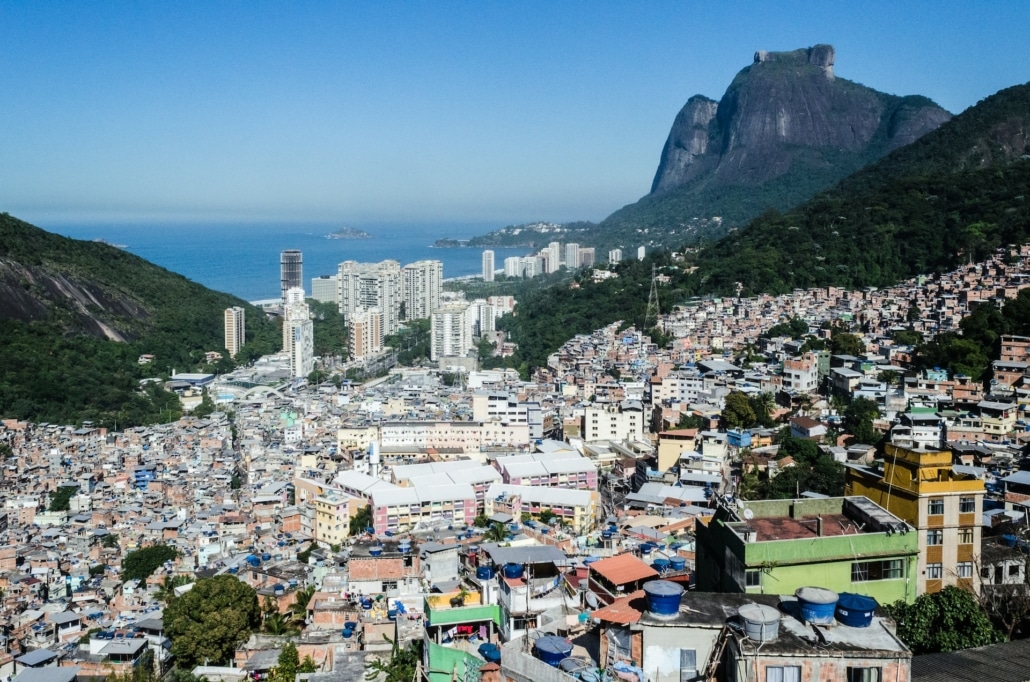
A few decades ago, Latin America was full of clearly anti-democratic regimes. Since then, the quantity and quality of democratic regimes in the region have increased. Yet, so has criminal governance: According to a recent study by Benjamin Lessing of the University of Chicago, 13 percent of the population in Latin America, nearly 80 million people, live under a criminal governance system. Why is there this contradiction?
I think we always thought that this was a contradiction. We had the hope and the illusion, perhaps a little naively, that as we moved towards more democratic regimes, we were going to see more integrity and honesty in the exercise of power.
But that illusion quickly collapsed, and we began to observe societies where democratic regimes coexist with enormous amounts of abuses, human rights violations and violence. Mexico and several countries in Central America, such as El Salvador and Honduras, have seen how the transition to democracy coincided with atrocious human rights violations. In Mexico, it is estimated that more than 100,000 people have disappeared in the last decade—although no one knows for sure, and the number may be much higher. And Salvadorans have been living under a state of exception since the end of March 2022, under which a variety of serious abuses have been committed. Many of these—torture, forced disappearances, assassinations—are committed in the name of fighting organized crime.
At the same time, we have seen how organized crime forces have developed in a very forceful way in authoritarian regimes, as in Venezuela.
And then there are countries that are democratic and have developed systems where violence has multiple causes. Take Brazil, where a mixture of structural conditions (poverty, inequality, marginalization and hopelessness) generates violence, and the state, through its coercive arm (police, army, security forces) acts violently, often committing abuses that are not investigated, let alone punished, in an atmosphere of impunity. A plurality of actors use violence to achieve their ends. Different manifestations of violence overlap: criminal, political and economic.
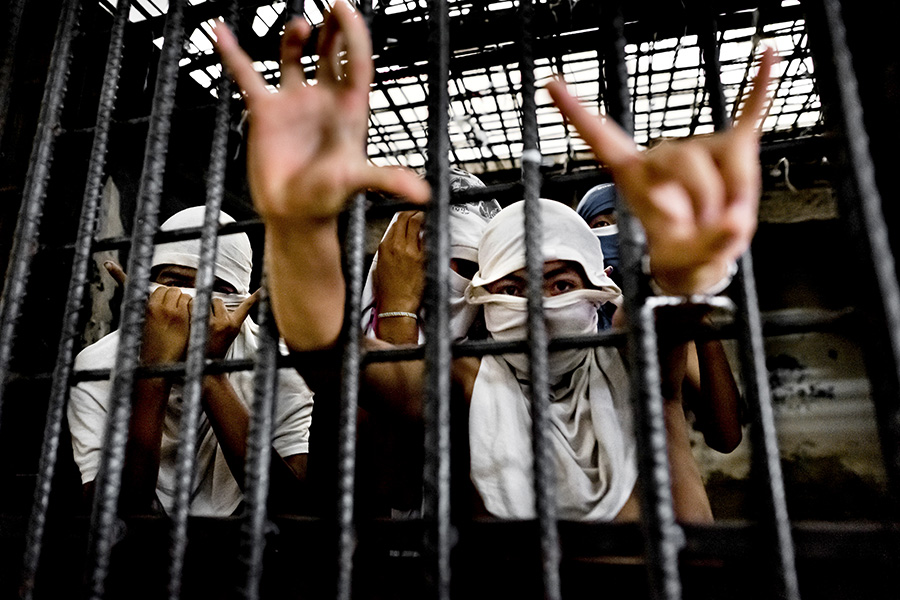
Prisons, surely, are places where the state should exercise control. What does it tell us that in Latin America we have several cases where the convicts themselves have a significant level of control over the prisons? In Ecuador, for example, some inmates must even pay a monthly fee to the mafias that control part of the prison in order to not be assaulted. Cases of similar control have been reported in Brazil and El Salvador.
This is the most fascinating case of all. This, from a conceptual point of view, is complex to understand, because if there is a place where the state has a monopoly on the legitimate use of violence, it is the prison.
Two alternatives explain this counterintuitive phenomenon: The state deliberately abandons prisons because it chooses not to exercise its power in that space; or it lacks the coercive capacity to control the individuals and organizations housed there.
And a third possible alternative is that they become spaces of criminal governance where the state and criminal groups co-govern.
Subscribe to the Ethical Systems newsletter
What is at the root of the birth of violent structures in Latin America? Is it due to inequality, poverty, ambition, corruption, the weakness of the states?
It is a tremendously complex phenomenon. I would say it is all these factors combined. The problem of violence is an issue of marginalization, of societies that do not give people opportunities to develop as individuals and participate in dignified conditions. A significant portion of the population lives marginalized from society, with low schooling, high poverty and high unemployment, and one of their few existing options is to join a criminal structure.
At the same time, there is a very important cultural phenomenon in which criminal organizations are attractive because of what they offer. Materialism and nihilism are recurring themes for the youth who enter this type of structure. They long for a life of glamour and a life of consumption and are willing to pay the ultimate sacrifice. Many of them tell you: I would rather spend five years as a sicario (hit man), but live them well, than spend 50 years in a demeaning job, being exploited, and overwhelmed by so much scarcity.
Finally, I would say that there is a strong state issue: states that are not capable of providing alternatives, or whose models are not attractive. The formal model of studying, of trying to get ahead, is very uncertain: It requires a lot of sacrifice and is not necessarily seen as attractive.
Many academic studies of this issue focus on homicides, drug trafficking and major crimes, and leave out less violent situations and regions. Are we underreporting the true level of criminal governance?
Absolutely. Contexts of criminal governance in countries like Uruguay and Costa Rica are very prevalent and go under the radar because people focus on the most emblematic cases, like Mexico, Brazil, Colombia, Venezuela, Guatemala, El Salvador and Honduras. But this is a much deeper problem and has to do with the weakening of state structures and the loss of the state’s legitimacy. These two elements undermine state capacity.
If you look at the levels of violence, this is a very strong indicator of how the coercive apparatus of the state in countries like Costa Rica and Uruguay has been weakening in the last 10 or 15 years. Homicide rates, although lower than in other nations in the region, have doubled in those two countries.
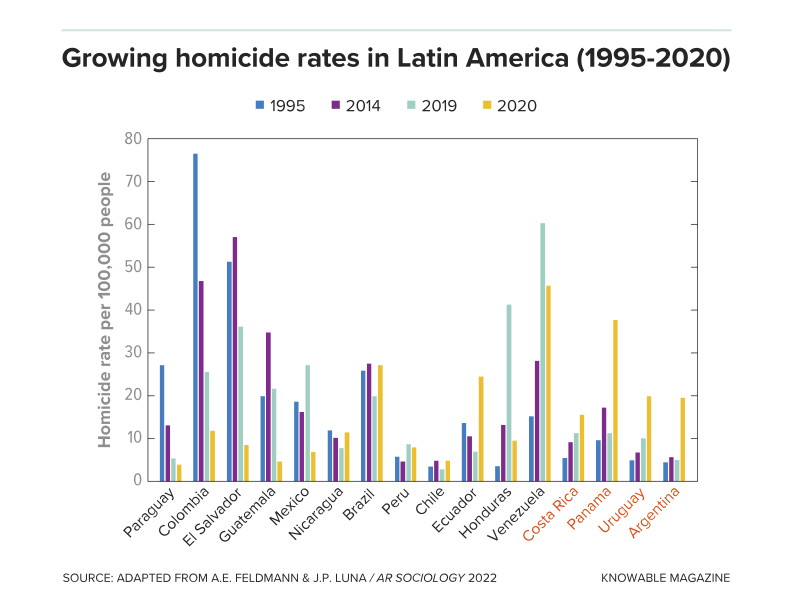
Some people may think that the solution to criminal governance is simply a stronger state. Is this view correct?
A truly strong state would be one with greater levels of legitimacy. What we observe today is that states are ineffective, they do not solve people’s problems and, at the same time, they are unjust, violent, corrupt. And rather than looking out for the welfare of the people, they often undermine their citizens. Public opinion studies from sources such as Latinobarómetro and the Latin American and Caribbean Public Opinion Project have been recording for years a decline in the levels of trust of the population towards their authorities, and an evident drop in the adherence to democracy: The population is more willing to live in less democratic regimes as long as their daily problems are solved. What is happening today in El Salvador is proof of this.
The problem in Latin America could be solved if the strength of the state—in terms of its legitimacy and its infrastructural power—improved. But it must be both, not just one. It is not just a matter of coercion; it is not just a matter of shooting bullets and trying to control these groups. Organized crime is a manifestation of acute social problems. These groups have many avenues of communication with the population, particularly in low-income communities where they interact with the population, know their fears and aspirations, and take advantage of that knowledge to achieve their objectives. Remember that most of the time criminals are members of a community. People know them and have personal ties of friendship and kinship with them.
What is the responsibility of the formal authorities in the establishment of criminal governance systems?
Enormous. Either they are complicit or their level of effectiveness and the public policies they implement—in one way or another—do not account for this reality.
The problem of criminal governance, and many problems that society has today, are structural problems that no political administration can solve in the time frame that each presidential term has. I have strong doubts that democratic regimes can address these types of problems unless the political sectors agree to a great pact, unless they understand the seriousness of the situation and act in unison.
I think we are at a point where that would probably be the only solution with any degree of viability. But politics in the background is pointing to something totally different: There is a great level of fragmentation and paralysis in the political arena. Ergo, what we see is that the problems are increasing every decade.
How do you think the issue of criminal governance will evolve in the next five years in the Latin American region?
I think, unfortunately, that the phenomenon is going to increase. The growing social and economic problems and the impotence of states to address them have opened spaces for criminal groups.
In country after country, states have withdrawn from many areas because they don’t have the capacity — and sometimes the will—to govern those areas. That vacuum has been filled by criminal actors. The only hope is that societies and political actors understand the seriousness of the issue and act accordingly, and together.
The region needs governments of national unity in which politically antagonistic sectors put aside extremist attitudes, make concessions and seek common solutions to the problems of governance. It is essential to forge a sustainable development model that provides the state with the conditions to raise the population’s standard of living. The challenge is monumental.
Pablo Fonseca Q. is a journalist based in Costa Rica. He holds a postgraduate degree in political science from the University of Costa Rica.
Lead image: Eman Kazemi / Alamy Stock Photo

Reprinted with permission from Knowable Magazine.

